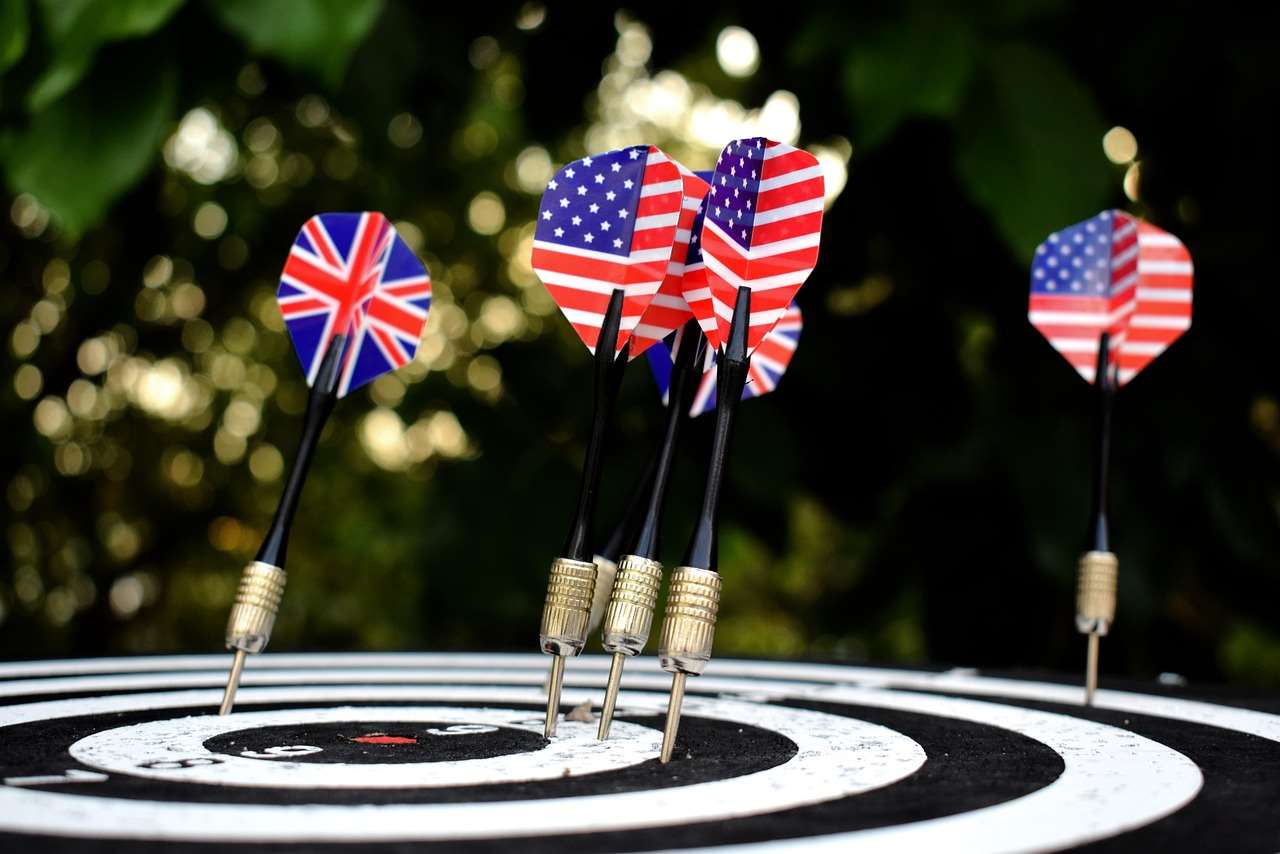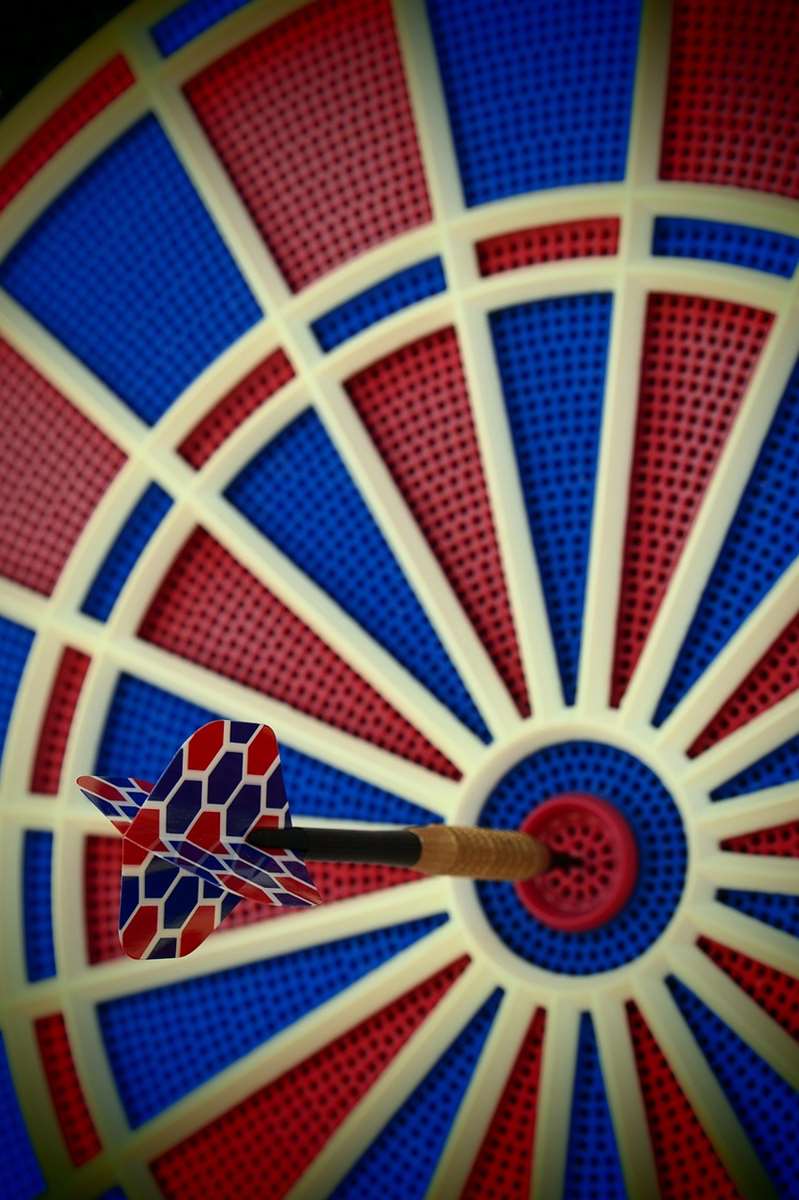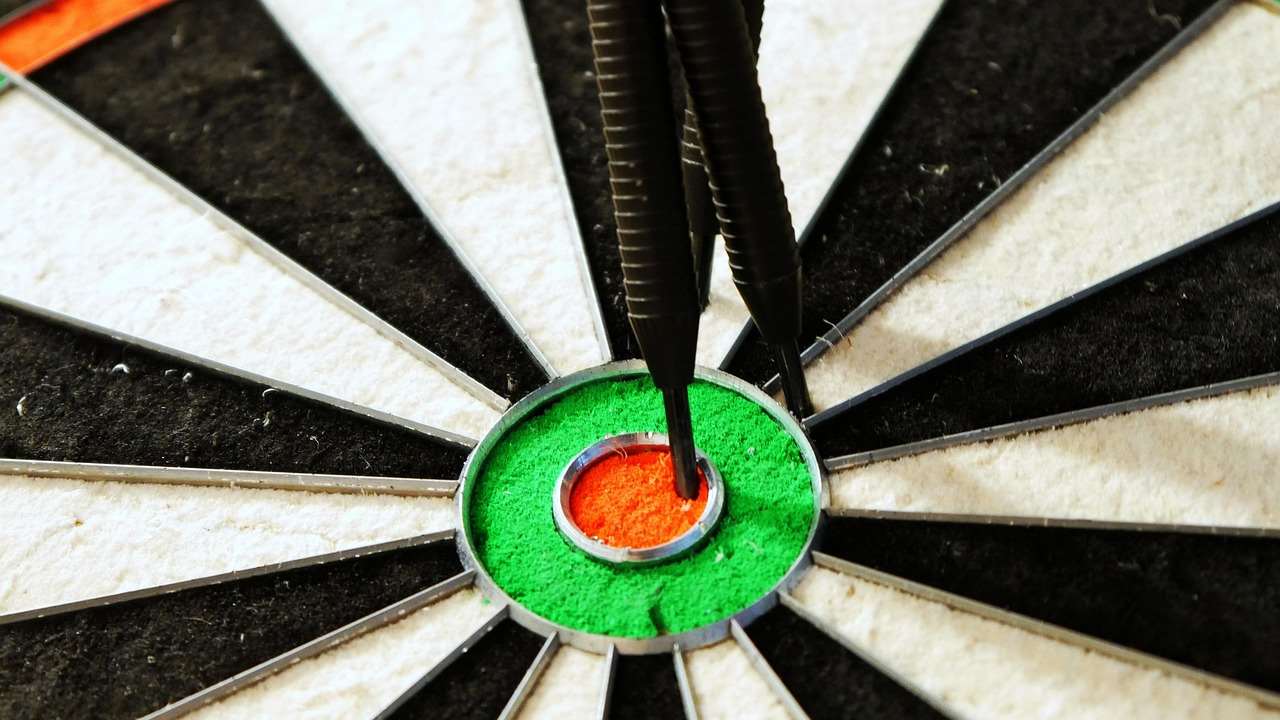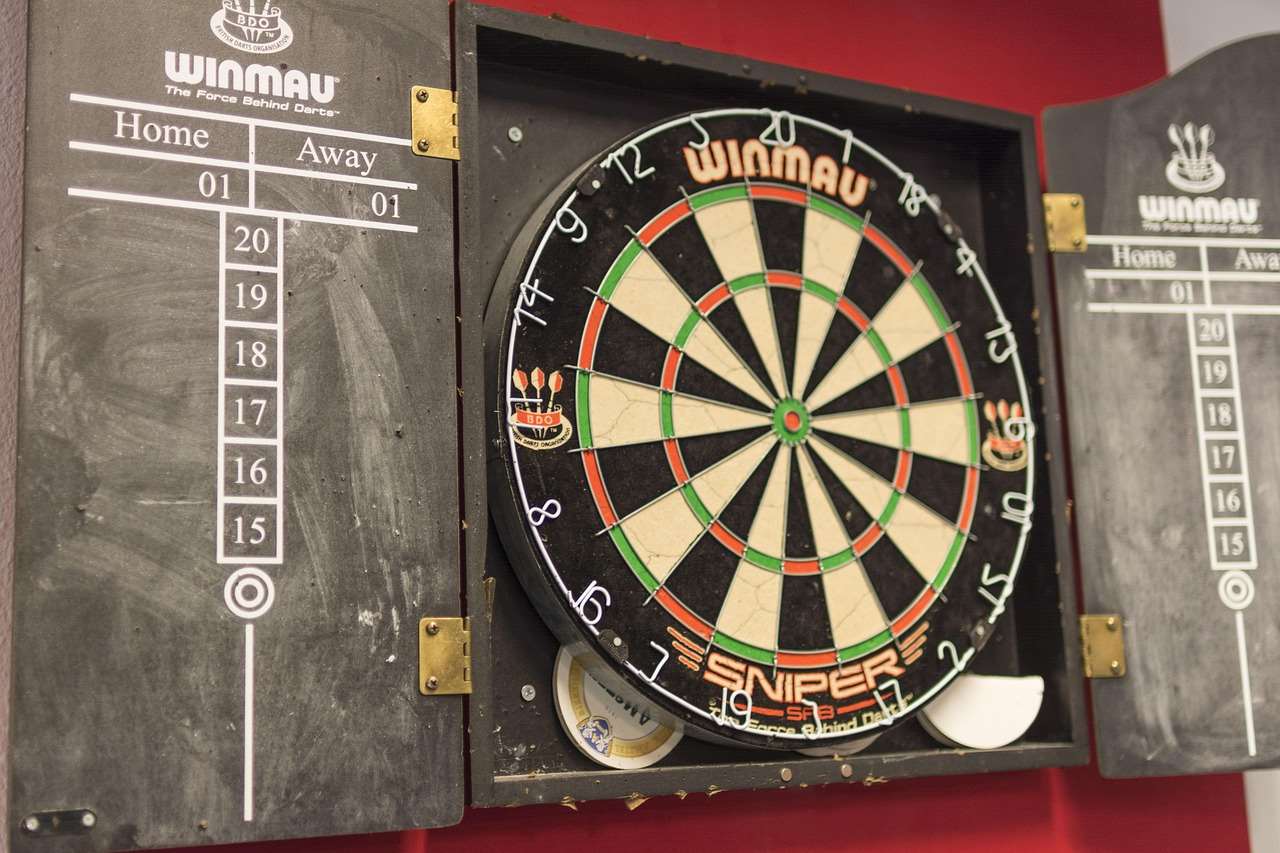Finding the right dart flight size is crucial for optimal performance. A dart flight size chart can be incredibly helpful in this process, guiding you towards the perfect fit for your darts and playing style. This article will not only explain how to use a dart flight size chart but also delve into the factors influencing flight selection, common mistakes to avoid, and tips for improving your overall dart game.
⚠️ Still Using Pen & Paper (or a Chalkboard)?! ⚠️
Step into the future! The Dart Counter App handles all the scoring, suggests checkouts, and tracks your stats automatically. It's easier than you think!
Try the Smart Dart Counter App FREE!Ready for an upgrade? Click above!
Choosing the right dart flight is a critical aspect of improving your game, and understanding how to use a dart flight size chart is the first step. Many factors come into play – the weight of your darts, your throwing style, and even the environment you play in. This article provides a comprehensive guide to help you navigate the world of dart flights, ensuring you make informed choices for enhanced accuracy and consistency.
Let’s start by understanding the basics. There’s more to flight selection than just picking a random shape and size. The size and shape of your dart flights directly affect how the dart moves through the air. A proper flight provides stability during flight, helping your dart reach its target without wobbling. Incorrect flights can cause significant inaccuracy. Consider this: You might be throwing perfectly, yet missing the bullseye consistently due to improper flight selection. A dart flight size chart is your guide to avoiding this!
Understanding Your Dart Flight Size Chart
A standard dart flight size chart typically shows the relationship between dart weight and flight size. It’s important to remember that the chart is a guideline, and experimentation is key to finding what works best for you. The chart will usually show several standard flight sizes, each categorized by its shape (standard, kite, pear, etc.) and size (standard, small, large).

Many online resources and dart retailers provide comprehensive dart flight size charts. Some even allow you to filter by dart weight, flight shape, and brand. Knowing your dart weight is crucial – this information is usually printed on the barrel of your dart, or on its packaging. Look for this information before referring to the chart.
Factors Affecting Flight Selection
- Dart Weight: Heavier darts generally require larger flights for stability. Lighter darts tend to benefit from smaller flights. The dart flight size chart helps you make this connection accurately.
- Throwing Style: Your throwing style significantly impacts flight selection. A high-release throw might benefit from a smaller flight for increased speed. A lower-release throw may need a larger flight for stability. Proper foot placement can also influence this.
- Environmental Factors: Wind can impact the flight path of your darts. In windy conditions, you might want to use a slightly larger flight to help counteract wind resistance.
- Personal Preference: Ultimately, the best flight size is the one you find most comfortable and accurate. Experiment with different flight shapes and sizes based on your dart flight size chart recommendations to find your sweet spot.
Experimentation is key. Once you’ve consulted your dart flight size chart, don’t be afraid to experiment. Slight adjustments can sometimes make a big difference in your accuracy and consistency. Try different flight shapes and sizes within the ranges suggested by your chart. You may find that a slightly larger or smaller flight than what the chart suggests provides you with the optimal performance.
Common Mistakes to Avoid When Using a Dart Flight Size Chart
While a dart flight size chart is a valuable tool, misinterpreting it or ignoring other factors can lead to mistakes. Here are some common pitfalls to avoid:

- Ignoring Dart Weight: Failing to accurately determine your dart weight is a major error. Use a scale to measure the weight precisely, as even small variations can impact flight selection.
- Neglecting Throwing Style: Using a chart without considering your throwing style can lead to poor flight choices and reduce accuracy. Observe your throwing style to determine if a higher or lower release is more consistent for you.
- Overlooking Environmental Conditions: Disregarding wind or other environmental factors can negatively impact your game, especially when using a flight size suggested by a dart flight size chart.
- Not Experimenting: Relying solely on the chart’s recommendations without any experimentation can limit your performance. Small changes can greatly impact your consistency and score.
Remember, a dart flight size chart is just a starting point. It’s vital to understand the principles behind flight selection and to experiment to find what works best for your individual game. Using a Automatic dart scoring app can also aid your experimentation and analysis by providing real-time data about your performance.
Advanced Techniques and Tips
Beyond the basics of using a dart flight size chart, let’s explore some advanced techniques to improve your dart game:

- Flight Shape: Experiment with different flight shapes (standard, kite, pear) to see which provides the best stability for your darts. Kite-shaped flights are known to offer more stability in windy conditions.
- Flight Material: Consider the material of the flights. Standard plastic flights are common but can be less durable. Consider polypropylene or other materials for more durability.
- Flight Stem Length: While not directly addressed in a dart flight size chart, stem length plays a role. A longer stem can affect the aerodynamic properties of the dart. Consider shorter stems for better stability if you’re using shorter barrels.
- Grip and Throw: Consistency in your grip and throwing technique is crucial. Irregular throwing can negate the benefits of even the best flight selection. Try practicing different throwing styles to enhance consistency.
Understanding the interplay between these aspects will improve your ability to refine your choice of darts and flights for better overall performance. You can also research various professional players’ techniques to gain additional insights into flight selection and dart throwing strategies. There’s a lot of information out there, from written guides to instructional videos. Check out online tutorials.
Beyond the Chart: Finding the Perfect Flight
While a dart flight size chart is a valuable tool, it’s not the only factor in selecting the right flight. Consider these additional factors:

- Your Personal Preference: After using the dart flight size chart and experimenting with various sizes and shapes, select the flight that provides you with the most confidence and consistency.
- Your Playing Environment: Consider the environment you play in. If you play in a windy area, you might benefit from larger flights for added stability.
- Your Budget: Flights come in various price ranges. Don’t let budget dictate quality. Invest in good quality flights that will last.
Remember, the process of finding the perfect flight is an ongoing journey of refinement. Regularly assess your performance and make adjustments as needed. You might find that your ideal flight size changes as your skills develop and as your throwing style evolves. Keep in mind the many different types of darts available: stainless steel darts are popular, as are azdarts and even pentathlon darts for specific game types.
Maintaining Your Flights
Proper maintenance of your flights can significantly extend their lifespan and prevent performance degradation. Consider these tips:
- Store them properly: Keep your flights in a protective case to prevent damage from bending or breaking. Proper storage is critical for preserving their shape and ensuring consistent performance.
- Clean them regularly: Wipe down your flights after each session to remove dirt, dust and debris which can affect their aerodynamics.
- Replace them promptly: Once the flights show signs of wear and tear, replace them immediately. Worn-out flights can impact your accuracy and consistency.
Remember that even small inconsistencies can impact the performance of your darts. Using worn-out or improperly stored flights will quickly deteriorate your accuracy, regardless of your skill level or how well you’ve utilized your dart flight size chart. Maintaining your darts is crucial. For example, if you are using a baseball dart board, you need to ensure your darts are up to par.

Consider exploring different dart corner precision techniques to optimize your game and discover the most suitable approach for your personal style and playing space. For those using mobile devices, you might also enjoy some darts apps to help track scores and enhance game statistics.
Conclusion
Using a dart flight size chart is a critical step towards improving your dart game. However, it’s crucial to remember that the chart serves as a guideline, not a rigid rule. Experimentation, understanding your throwing style, and maintaining your equipment are all essential components of achieving optimal dart performance. By combining chart usage with practical experience and a keen eye for detail, you can significantly enhance your accuracy and consistency on the board, leading to higher scores and a more enjoyable game! Now, grab your darts, check that dart flight size chart one more time, and get practicing!
Remember to use a dart linked list strategy for organizing your various flights and keeping track of your successful experiments.
Hi, I’m Dieter, and I created Dartcounter (Dartcounterapp.com). My motivation wasn’t being a darts expert – quite the opposite! When I first started playing, I loved the game but found keeping accurate scores and tracking stats difficult and distracting.
I figured I couldn’t be the only one struggling with this. So, I decided to build a solution: an easy-to-use application that everyone, no matter their experience level, could use to manage scoring effortlessly.
My goal for Dartcounter was simple: let the app handle the numbers – the scoring, the averages, the stats, even checkout suggestions – so players could focus purely on their throw and enjoying the game. It began as a way to solve my own beginner’s problem, and I’m thrilled it has grown into a helpful tool for the wider darts community.